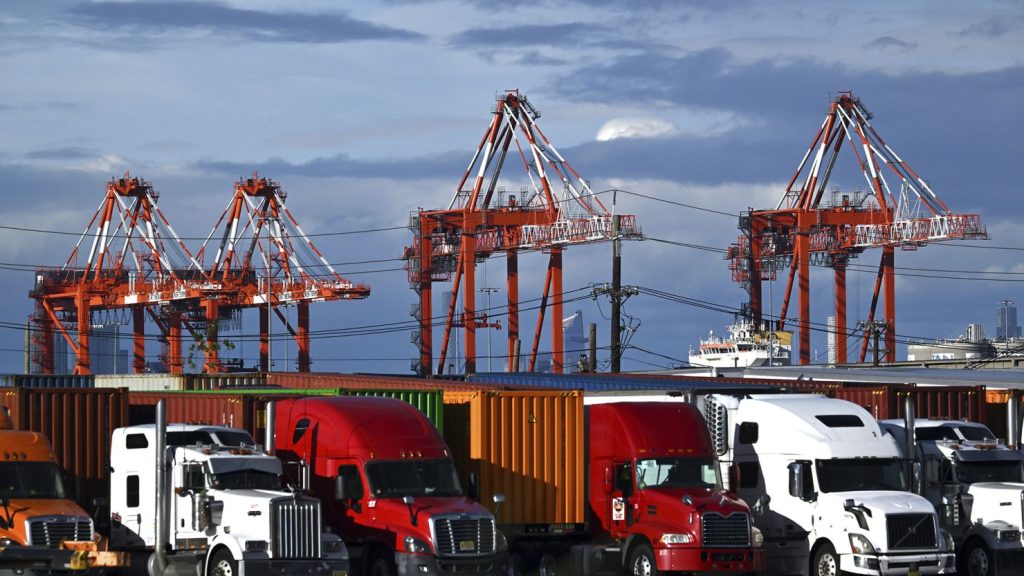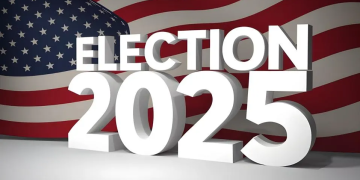May Jobs Report: Resilience, Revisions, and Regional Realities
The May 2025 jobs report surprised markets yet again. Nonfarm payrolls rose by a robust 272,000—well above consensus expectations of 180,000. The unemployment rate ticked slightly higher to 4.1%, yet the labor force participation rate remained steady. For a nation in the middle of a global trade recalibration—with rising tariffs on Chinese EVs, retaliatory duties on U.S. tech exports, and mounting supply chain uncertainties—this resilience has puzzled many economists.
But beneath the surface, the labor market story is not just about job growth—it’s about sectoral adaptation, policy tailwinds, and underlying demographic strength. Employment in healthcare, construction, and state/local government all saw healthy gains. Manufacturing was roughly flat, and transportation/logistics saw a minor decline, possibly reflecting inventory normalization rather than outright weakness. Moreover, revisions to prior months were modest—suggesting that while the economy isn’t on fire, it’s certainly not folding under the pressure of tariffs and tighter financial conditions.
So why is the U.S. labor market holding up so well in 2025? And more critically, what does this resilience mean for inflation, wage trends, and Fed policy going into the second half of the year?
Tariffs and Labor: Friction Without Fracture
Since early 2024, the Biden administration has implemented a sweeping series of new tariffs: 100% on Chinese EVs, 50% on solar panels, and 25% on critical minerals like graphite and rare earths. At face value, this policy pivot—designed to safeguard domestic industry—should dampen demand in affected sectors and push input costs higher. Yet job losses in the auto and clean tech sectors haven’t materialized. In fact, hiring at Tesla’s Texas Gigafactory, Ford’s battery plants, and regional EV infrastructure firms has accelerated, buoyed by federal subsidies under the Inflation Reduction Act and CHIPS Act.
Meanwhile, firms that depend on imported intermediate goods have diversified sourcing quickly, relying more on Mexico, Vietnam, and India. The labor market has proved adaptive in this realignment. For example, logistics and customs clearance roles have expanded near U.S.-Mexico border cities, and warehouse automation specialists are in higher demand as companies seek to optimize disrupted supply chains.
Rather than a frontal shock, tariffs have acted more like a structural nudge—spurring domestic capacity investment and shifting employment across regions rather than causing outright declines.
Wage Growth Is Cooling—but Still Beating Inflation
One key reason for labor market stability is the behavior of wages. Average hourly earnings rose 0.4% in May, bringing the year-over-year increase to 4.1%. This outpaced core CPI inflation, which stands at 3.4%. While wage growth has clearly moderated from the pandemic-era highs of 2021–2022, it remains strong enough to support household consumption.
The sectors driving wage growth are not the usual suspects. Hospitality, nursing, skilled trades, and software development saw some of the fastest hourly earnings gains. Notably, union-negotiated wage contracts in the auto and aerospace sectors are locking in multi-year raises, creating a “wage floor” that supports middle-income workers even as inflation trends downward.
Importantly, wage gains are no longer heavily tilted toward low-wage catch-up. The composition of job growth has shifted toward higher-skilled roles, suggesting that productivity gains may finally be translating into real income growth. This trend bodes well for consumer resilience and reduces the risk of a wage-price spiral.
At the same time, corporate commentary from earnings calls shows an encouraging shift: firms are willing to pay for talent that helps them adapt to new trade realities, but are increasingly focused on productivity per hire. That means fewer excess headcount increases, but more investment in training and automation—two long-term positives for wage sustainability.

Fed Policy: Strong Jobs = Hawkish Bias? Not So Fast.
The strong labor data has raised the specter of Fed hawkishness, especially as market participants reassess the likelihood of interest rate cuts in 2025. The May jobs report sent 10-year Treasury yields up by 12 basis points and pushed back rate cut expectations to December. Fed officials have repeatedly emphasized that labor market softness is a key condition for easing—but what if that softness never materializes?
The Fed’s dilemma is clear. Inflation is trending lower, albeit slowly. Wage growth is steady, but not excessive. And job creation is robust. These are not conditions that demand urgent cuts. However, they are also not sufficiently overheated to justify additional hikes. Instead, the most likely scenario is a “higher-for-longer” stance, where the Fed waits for clearer disinflation in core services before making its move.
Fed Chair Powell has also reiterated that the central bank sees tariff-induced inflation as “transitory supply-side friction” rather than systemic. That gives policymakers some room to discount import price pass-throughs when evaluating rate decisions.
In short, a resilient labor market may delay rate cuts, but it doesn’t necessarily doom them. The Fed’s focus is on inflation persistence—not job strength per se.
The Role of Immigration and Labor Supply
One overlooked pillar of labor market resilience has been the rebound in immigration. After pandemic-era restrictions, net immigration into the U.S. surged in 2023 and 2024, helping ease tightness in healthcare, logistics, and food services. This has not only expanded the labor supply but also moderated wage inflation in several key metro areas.
The Bureau of Labor Statistics estimates that nearly 40% of net job gains since Q3 2023 have gone to foreign-born workers. This influx has been particularly beneficial in coastal cities like New York, San Francisco, and Miami—helping fill roles in elder care, nursing, and construction that had faced acute shortages.
In essence, immigration is acting as a pressure-release valve. It’s absorbing the friction created by tariff-induced cost increases and enabling firms to scale without bidding up wages uncontrollably. Long-term labor market health depends in part on maintaining this flow—especially as U.S. demographics skew older.
Key Risks to Watch: Debt, Delinquencies, and Job Quality
Despite the good news, not all signals are green. Household debt delinquencies are rising, particularly among credit card and auto loan holders. This suggests that while the top-line labor data is solid, some consumers are stretched thin. Wage gains are real, but not evenly distributed. The bottom 20% of earners are still grappling with housing inflation, transportation costs, and child care burdens.
Moreover, job quality metrics are mixed. Full-time employment is up, but part-time for economic reasons also rose slightly in May. Temporary help services—a leading indicator of labor market softness—continue to decline.
For investors and policymakers, this means vigilance. A resilient labor market is not immune to shocks. A sharp escalation in trade disputes, a credit event, or a geopolitical disruption could quickly shake consumer sentiment and hiring intentions.
Conclusion: Adaptation, Not Immunity
The U.S. labor market in 2025 is not immune to trade tensions—but it is impressively adaptive. A combination of policy support, regional economic diversification, and productivity-focused hiring is helping the labor force absorb shocks that would have derailed job growth in previous decades.
Tariffs, rather than destroying jobs, are reshaping the composition and geography of employment. Wage growth remains healthy, if uneven. And while the Fed is in no rush to cut rates, the overall macro backdrop is not alarming enough to justify further tightening either.
In the end, the labor market’s resilience is less a mystery and more a testament to how dynamic the U.S. economy can be—when firms, workers, and policymakers all move in sync. But that doesn’t mean it’s time for complacency. Ensuring that this resilience is equitable, durable, and productivity-enhancing will be the true test in the years ahead.













































